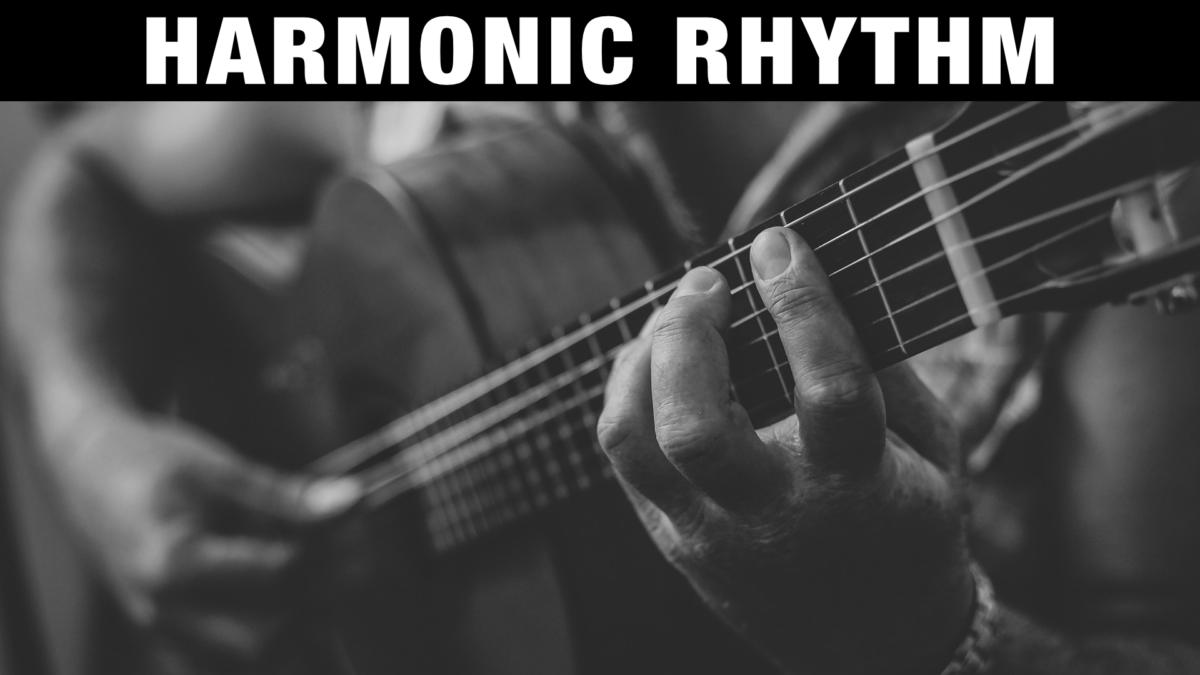 Harmonic rhythm (also called harmonic temp) is the rhythm of chord changes in your composition.
Harmonic rhythm (also called harmonic temp) is the rhythm of chord changes in your composition.
For example: 4 measures with only one chord per bar means a slow harmonic rhythm, while the same measures with 4 chords per bar is a fast harmonic rhythm.
Harmonic Rhythm vs Melodic Rhythm
Something that is also important in terms of the overall feeling of harmonic tempo to the listener, is the relationship between the harmonic rhythm (chord changes) and the melodi rhythm (how many melodic notes per bar).
For example: if you have 16 notes in your melody for one measure, but only 1 chord. The harmonic rhythm will in contrast feel even slower.
In practice, holding chords for a longer duration (slow harmonic rhythm) will have a similar effect of a drone or pedal tone. It will feel like a harmonic anchor to the listener, and the melody will have a lot of creative freedom.
Chord Rhythm for Independent Chords
Aside from harmonic rhythm, which means the chord changes, another aspect that is very important for the rhythmic energy and driving feel in a piece of music, is the rhythm of each chord by themselves.
Meaning that if you play a D minor chord for 1 bar in terms of the “harmonic rhythm”, there is still a huge difference between strumming that chord 8 times on a guitar, and doing a single long sustained chord for the entire measure. This is the “chord rhythm” for each chord itself.
And this aspect can become even more complex when you start to consider each voice and instrument that plays a part of that chord. Because while a piano or guitar can play full chords in a rhythmic way, most other instruments play one of the voices in the chord.
This means you have to account for all independent voices when creating the “chord rhythm” that will shape the energy and groove of your chords.

